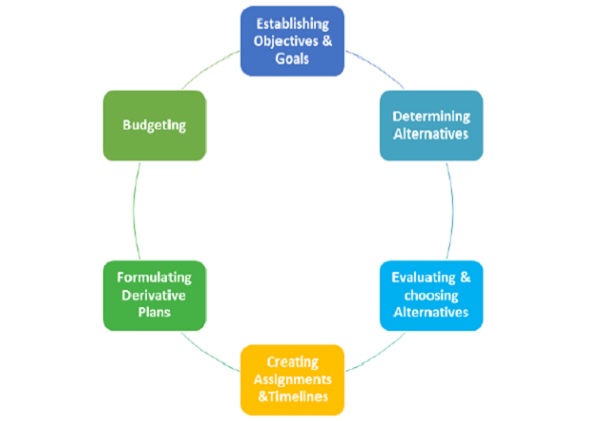
- Management Principles - Home
- Management - Overview
- Management - Role Of Managers
- The P-O-L-C Framework
- Management - Ecosystem
- Management - Environment
- Management - Factors Affecting
- Management - Organization
- Management - Leadership Styles
- Management - Framework
- Mission,Vision and Values
- Personalty and Attitude
- Work Attitude and Behaviour
- Decision Making
- Decision Making Nature Significance
- Factors Affecting Decision Making
- Decision Making - Styles
- Decision Making - Tools
- Management - Planning
- Planning - Introduction
- Types Of Plans
- The Planning Environment
- Organizational Structure
- Importance Of Organizing
- Principles Of Organizing
- Organizational Structure
- Organizational Process
- Change Management
- Organizational Change
- Organizational Change Factors
- Organizational Change Management
- Globalization and Its Effect
- Multinational Organizations
- Global Ecosystem and its Impact
- Management Useful Resources
- Management - Quick Guide
- Management - Useful Resources
- Management - Discussion
Planning Environment
Planning is the fundamental process in management which moves gradually and a step-by-step approach is usually adopted. It involves the determination of objectives and outlines the future actions needed to achieve these objectives. The above diagram represents the planning process.

Establishing Objectives and Goals
The first step of the management planning process is to identify goals specific to the organization and also for each department unit. A comprehensive planning effort to be successful requires that managers in each department be involved in the planning process. Thus objectives and goals which will direct the future course of the organization must be clear, concise and specific.
At this stage, the planning process should include a detailed overview of each goal, including the reason for its selection and the anticipated outcomes of goal-related projects. The objectives thus established govern the framework for every major department, which in turn, control the objectives of subordinate departments and so on down the line.
Determining Alternatives
The next step is to search for and find out alternatives that will guide the fulfillment of the objectives established. At this stage, managers need to plan on how to move from their current position towards their decided future position.
Managers may find many alternatives, however, dropping the less desirable ones and narrowing on the few desired alternatives is what will help in identifying the best fit solution. The manager can take the help of quantitative techniques, research, experimentation, and experience to determine various alternatives.
Evaluating and Choosing Alternatives
Once alternative courses of action have been identified, each alternative has to be analyzed and evaluated in the light of its strength and weakness and its fitment in achieving the organizational goals. While evaluating alternatives, managers should consider facts like the costs involved, how resource intensive it is, the time frame for completion, the gestation period, return on investment, etc.
Major challenges of effective evaluation can be uncertainty about the future and risk. Various intangible factors which are not within the control of the management like market changes, socio-economic-political factors, etc. also have a bearing. At this stage, managers can use operations research, and mathematical as well as computing techniques to predict and analyze alternatives.
Creating Assignments and Timelines
As the plans are frozen and prioritized, timelines for completing associated tasks need to be finalized. At this stage, resource allocation and the line of authority and responsibility also needs to be established. The manager should consider the abilities of staff members and allocate the best fit resource for the job.
Also the timelines for completion should be realistic and fair. This step in the planning process is important as it brings coordination in the activities of different departments. The timings and sequence of operations must be communicated to the concerned departments, managers and staff for implementation of the plan.
Formulating Derivative Plans
Derivative plans are sub-sections of the operating plan. The division of overall plan into derivative plans is necessary for effective execution. Derivative plans are essentially required to support the basic or general plan and explain the many details involved in reaching a broad major plan.
Budgeting
Once the plans are finalized and set, the final step is to convert them into quantifiable parameters through budgeting. Budgets are most commonly expressed in terms of money, but are also expressed as hours worked, as units sold, or in any other measurable unit.
An enterprise usually has overall budgets representing the sum total of income and expenses, with consequent profit or surplus. Each department of the enterprise or organization can have its own budget, commonly of expenses and capital expenditures, which make up the overall budget. A well planned budgeting exercise can become a standard for measuring the progress and effectiveness of the planning process.